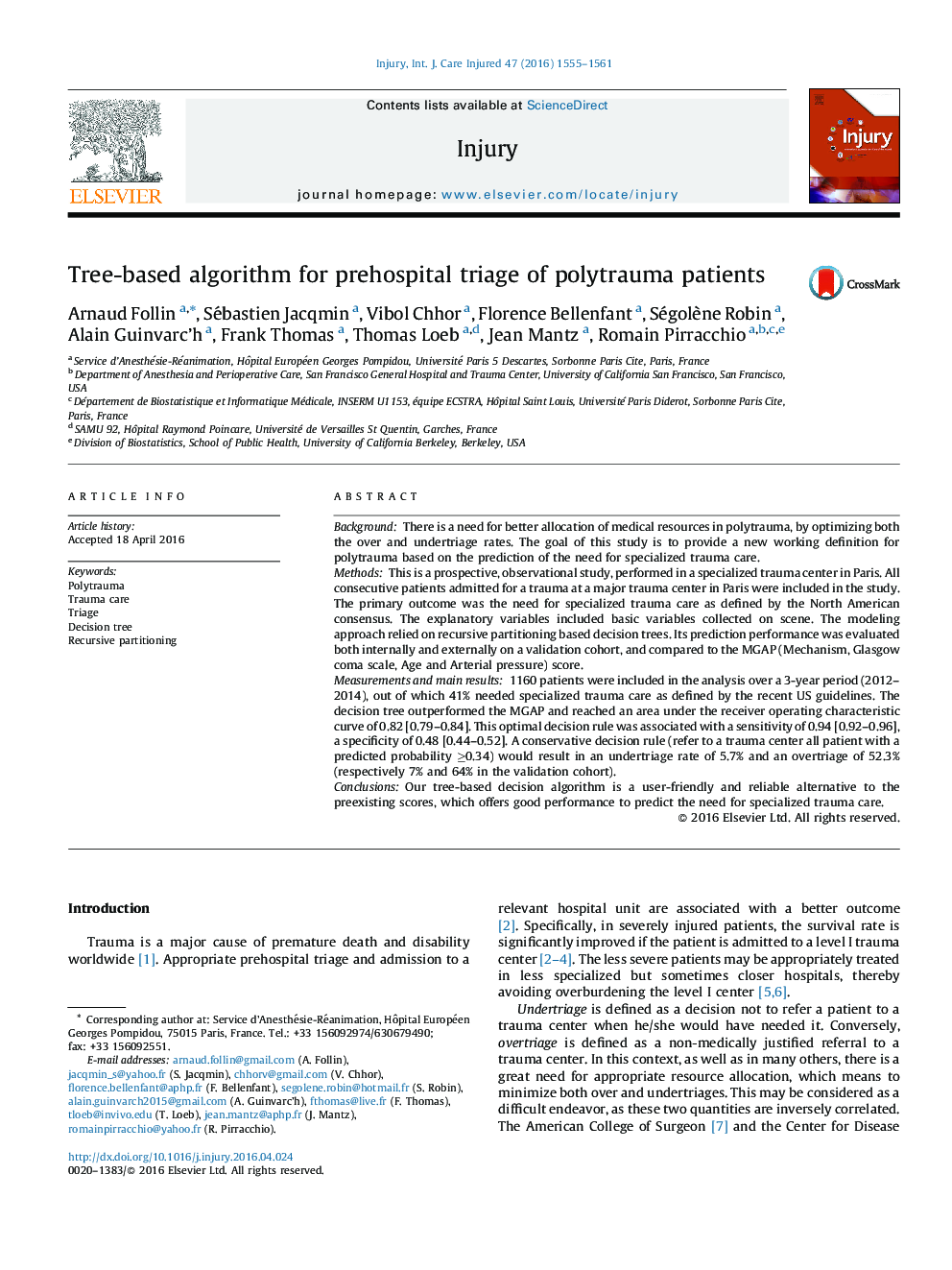| Article ID | Journal | Published Year | Pages | File Type |
|---|---|---|---|---|
| 6082769 | Injury | 2016 | 7 Pages |
BackgroundThere is a need for better allocation of medical resources in polytrauma, by optimizing both the over and undertriage rates. The goal of this study is to provide a new working definition for polytrauma based on the prediction of the need for specialized trauma care.MethodsThis is a prospective, observational study, performed in a specialized trauma center in Paris. All consecutive patients admitted for a trauma at a major trauma center in Paris were included in the study. The primary outcome was the need for specialized trauma care as defined by the North American consensus. The explanatory variables included basic variables collected on scene. The modeling approach relied on recursive partitioning based decision trees. Its prediction performance was evaluated both internally and externally on a validation cohort, and compared to the MGAP (Mechanism, Glasgow coma scale, Age and Arterial pressure) score.Measurements and main results1160 patients were included in the analysis over a 3-year period (2012-2014), out of which 41% needed specialized trauma care as defined by the recent US guidelines. The decision tree outperformed the MGAP and reached an area under the receiver operating characteristic curve of 0.82 [0.79-0.84]. This optimal decision rule was associated with a sensitivity of 0.94 [0.92-0.96], a specificity of 0.48 [0.44-0.52]. A conservative decision rule (refer to a trauma center all patient with a predicted probability â¥0.34) would result in an undertriage rate of 5.7% and an overtriage of 52.3% (respectively 7% and 64% in the validation cohort).ConclusionsOur tree-based decision algorithm is a user-friendly and reliable alternative to the preexisting scores, which offers good performance to predict the need for specialized trauma care.
